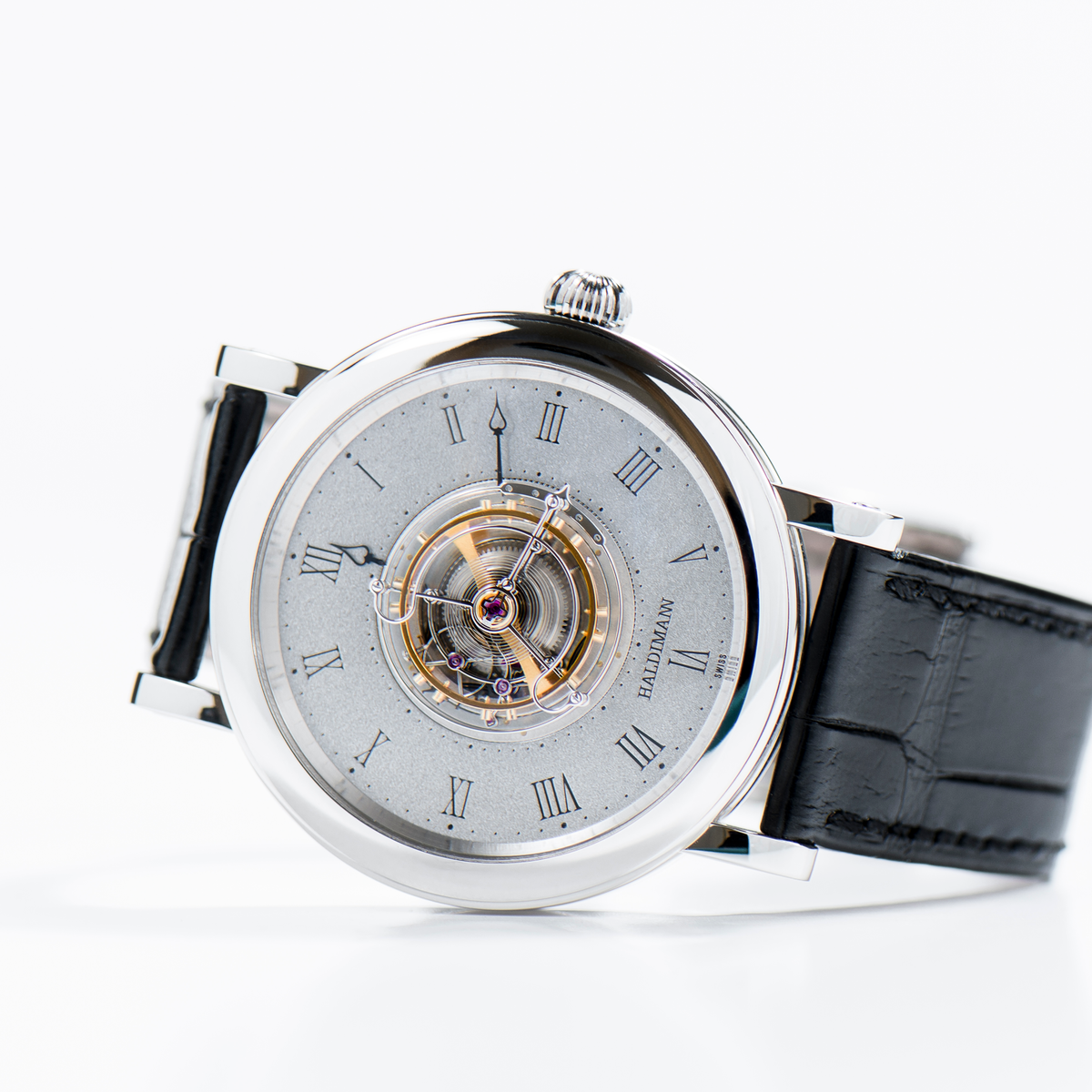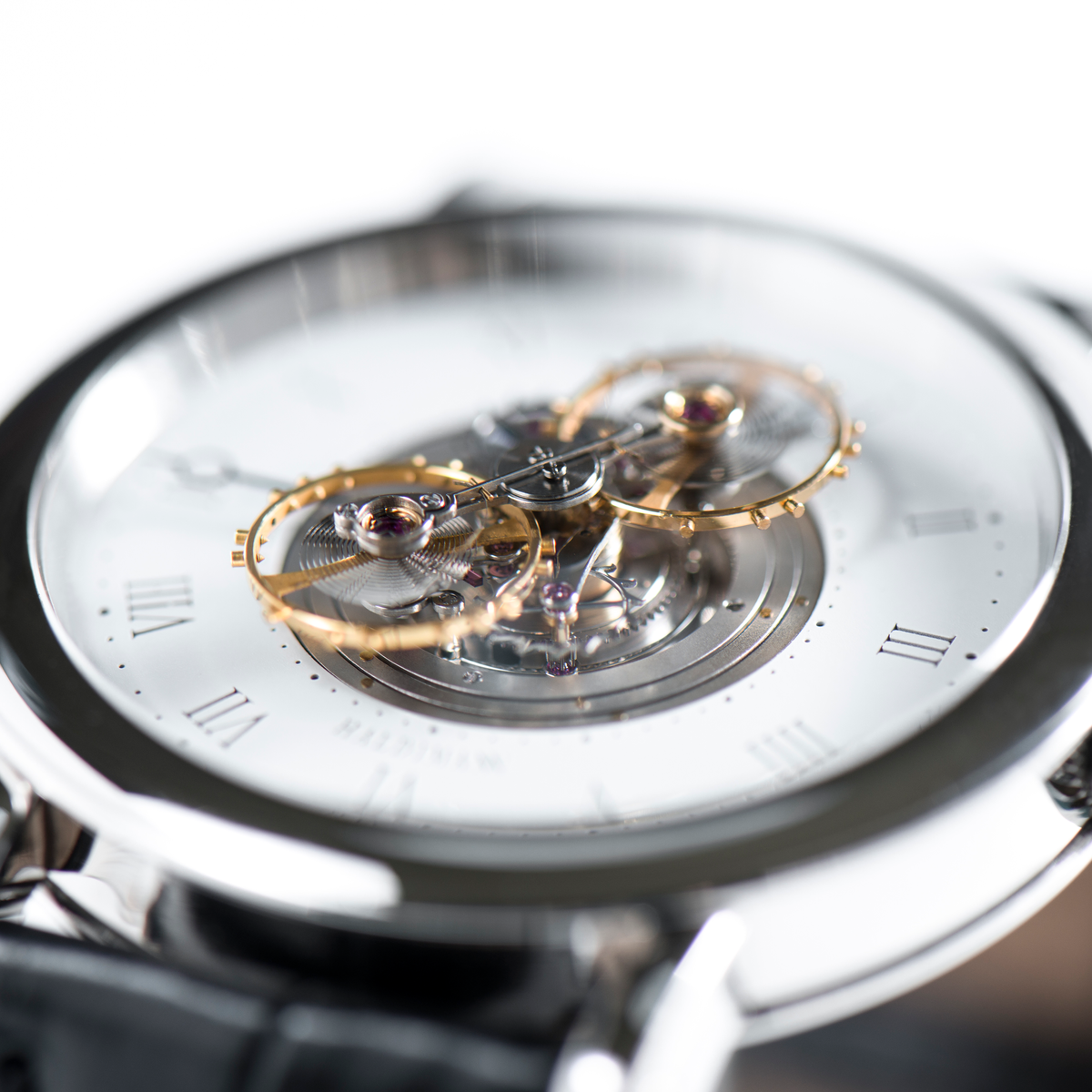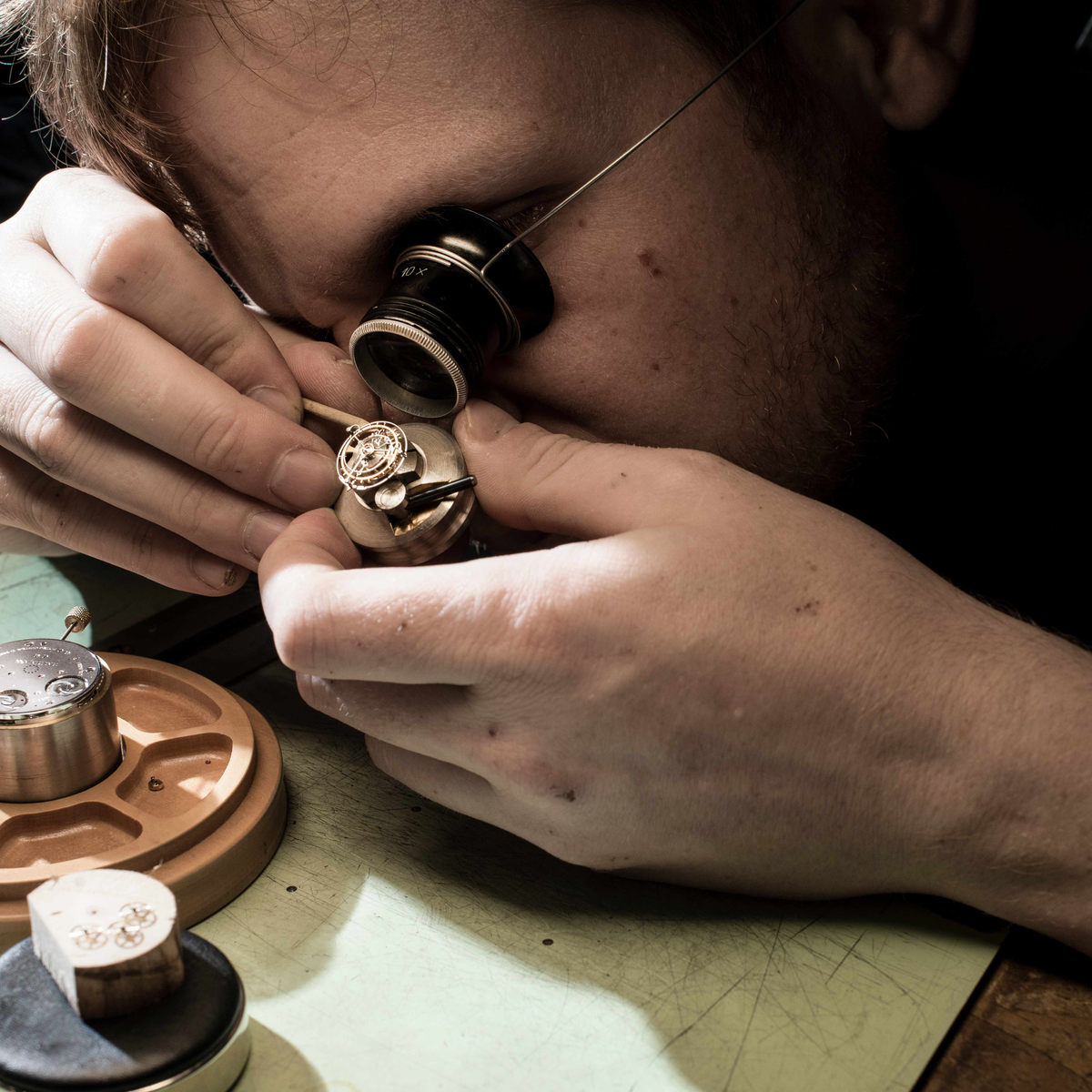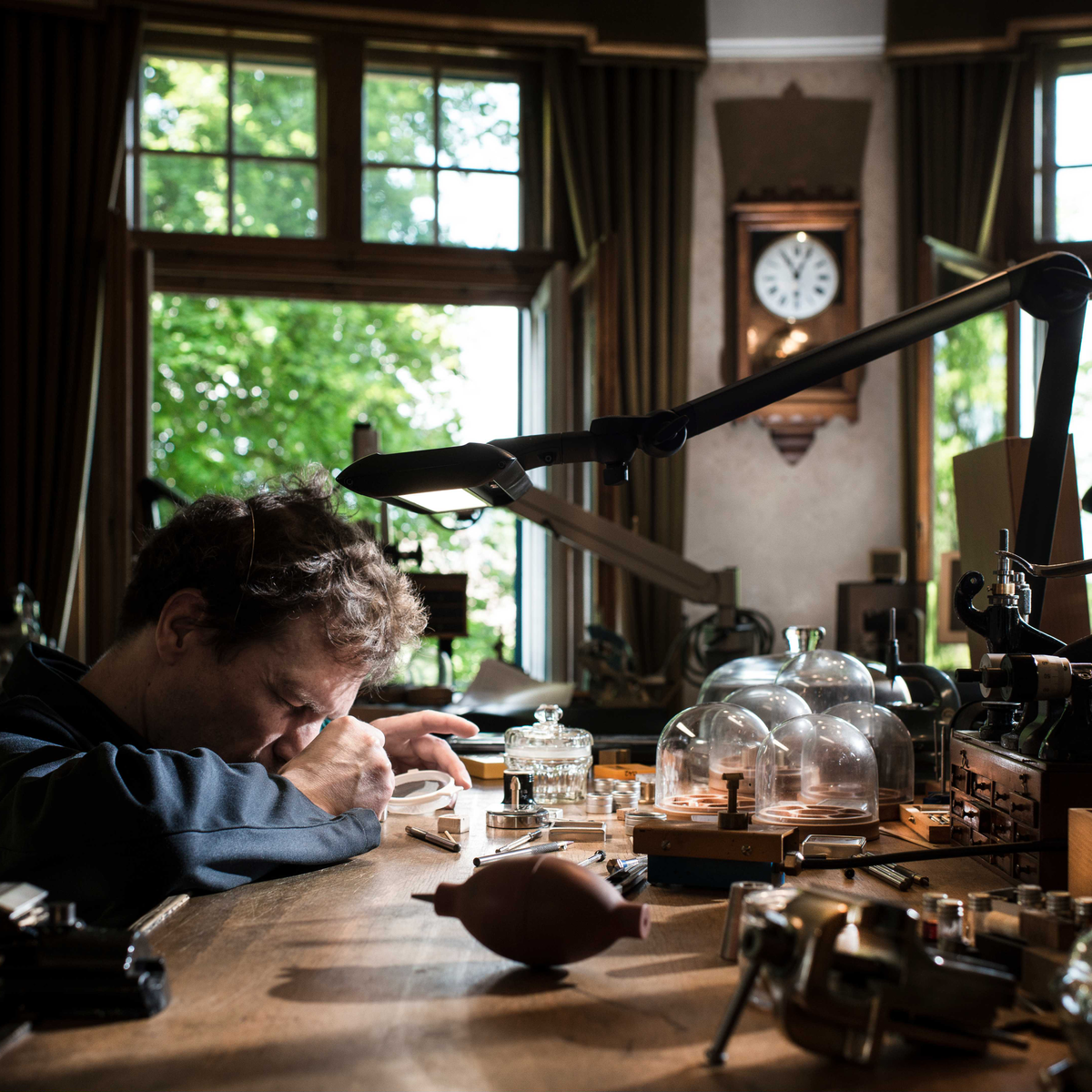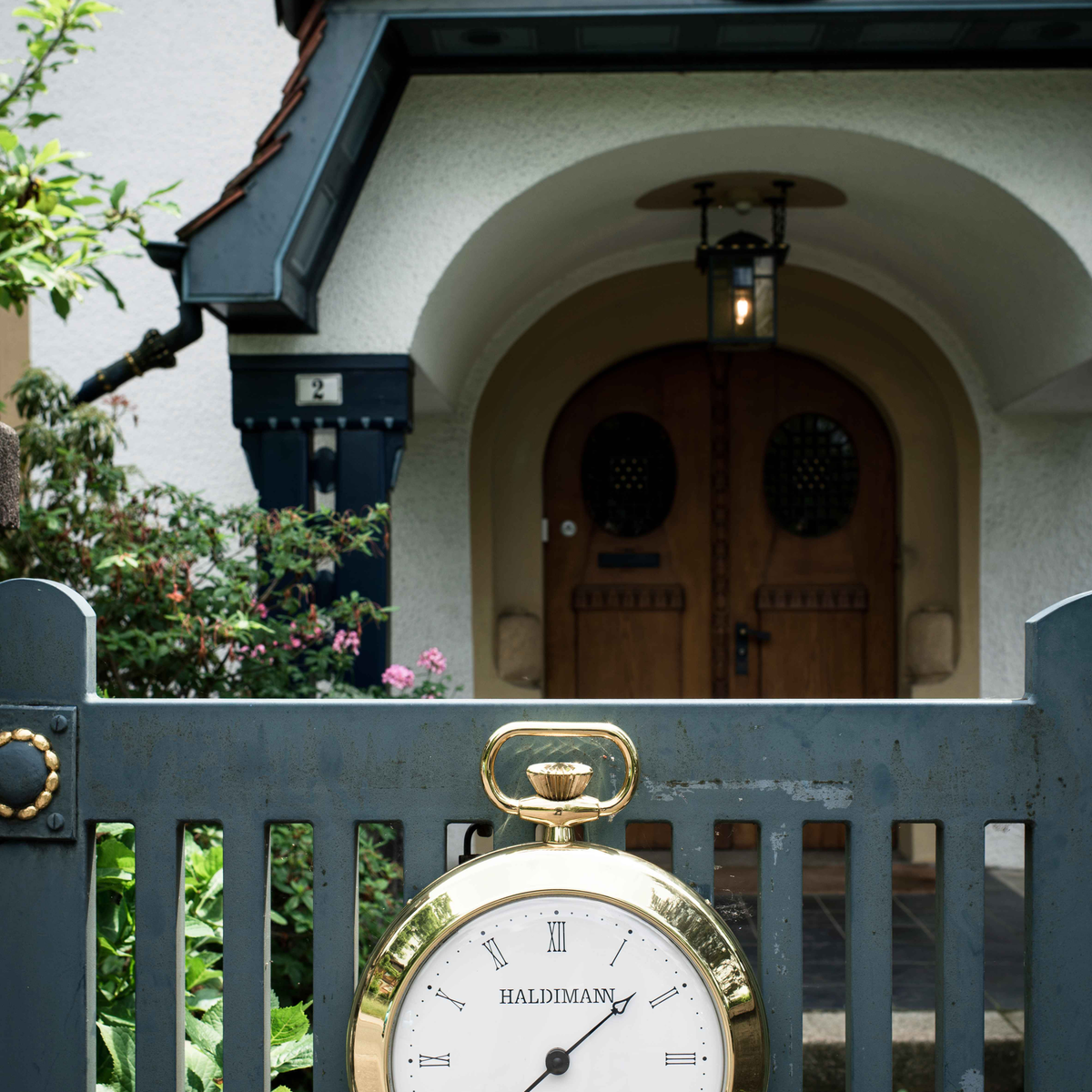Born in 1964, Beat Haldimann descends from a line of horologists that extends back to the seventeenth century and whose work is attested by a number of historical pieces signed with the Haldimann name. Having qualified in 1993, he is today regarded as one of the twenty most talented watchmakers of his generation. From his home and workshop in Thun – the 1907-built Villa Nussbühl –, assisted by a small staff, he makes watches in the grand horological tradition. Indeed, Beat Haldimann takes an uncompromising approach to his craft. Each watch that leaves his workshop (between 20 and 30 a year) and virtually every one of their parts are made “the old way”, namely by hand and using pre-digital tools. The most modern piece of equipment you’ll find is a 1960s optical microscope.
While this winner of the 2009 Prix Gaïa in the Craftsmanship-Creation category may have immense respect for the past, his watchmaking is no less original and innovative. His first masterstroke was the H101, a clock whose two movements oscillate in resonance. Presented in 2000, it incorporates the patented Haldimann detached escapement that delivers precision to one-tenth of a second a day. Two years later, Beat Haldimann came to Baselworld with a world-first: the H1 Flying Lyra wristwatch whose flying central tourbillon, located on the dial side, revolves in a lyre-shaped cage. Collectors were immediately captivated by a mechanism that “hums” against the ear. It was followed in 2005 by another tour de force, the H2 Flying Resonance and its two flying tourbillons with remontoir d’égalité, again on the dial side, which oscillate at the same frequency. The sequel would be considerably more conceptual: first the H8 Flying Sculpture, a “watch” with the same tourbillon as the H1 but with no hands, then the H9 Reduction, again with a central tourbillon but one that is completely hidden from view beneath an opaque black dial.
His next two watches, the H11 and H12, returned to a more classical register and reprised a principle of Beat Haldimann’s earlier pieces by positioning the balance centrally – something never previously achieved on a watch with centrally mounted hands. Then came another break with convention with the release, in 2021, of the H51 Time-Hora in wristwatch and clock editions. Both symbolise the flow of time by three rotating circles: one for the present, making one revolution in 12 hours, and two that represent the imaginary duration of days and nights past and future. For Beat Haldimann, a watch can depict the beauty of thought – a cognitive aesthetic.
1985
Qualified as an “horloger-rhabilleur” (watchmaker qualified to carry out services and repairs) then in 1993 as a master watchmaker.
1992-2001
Carried out R&D for various brands.
2000
Patent for the Haldimann detached escapement, precise to 1/10th of a second and fitted in the H101 clock whose two movements oscillate in resonance.
2002
H1 Flying Lyra with flying central tourbillon.
2005
H2 Flying Resonance with double flying tourbillon and remontoir d’égalité.
2008
H8 Flying Sculpture, fitted with the same tourbillon as the H1 but with no hands.
2009
Prix Gaïa in the Craftsmanship-Creation category.
2012
H9 Reduction whose tourbillon (that of the H1) is concealed under a black dial.
2016
H11 with central balance.
2019
H3 Flying Sculpture with Minute Repeater.
2021
H51 Time-Hora that represents passing time symbolically. Made as a tribute to the astronomer and mathematician Jost Bürgi (1552-1632).

